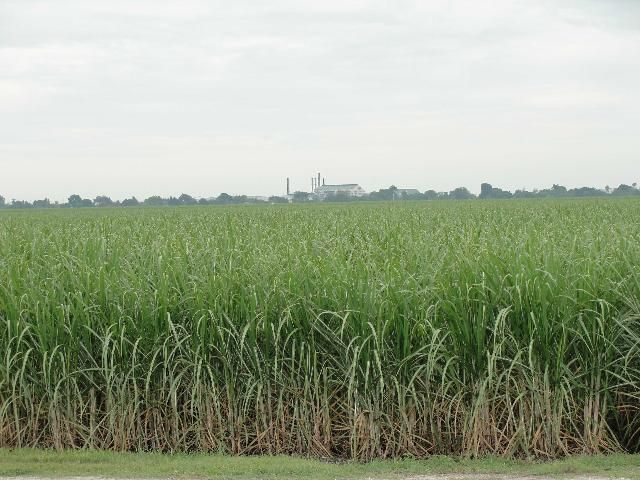Sugarcane Product and Its Role in the Global Renewable Energy Movement
Sugarcane Product and Its Role in the Global Renewable Energy Movement
Blog Article
The Trip of Sugarcane: From Harvest to Everyday Products
The trip of sugarcane is a multifaceted process that begins with careful farming and finishes in a selection of products that penetrate our day-to-day lives. As we discover the numerous elements of sugarcane's trip, its function in sustainability and the wider implications for our atmosphere come into sharper focus.
Growing of Sugarcane
The farming of sugarcane is a critical agricultural procedure that calls for details environmental problems and management techniques. Optimal growth takes place in subtropical and exotic regions where temperatures vary in between 20 ° C and 32 ° C. Adequate rainfall or irrigation is crucial, as sugarcane prospers in moist dirt with well-drained problems (sugarcane product). Dirt top quality significantly influences return; therefore, farmers usually conduct dirt tests to figure out nutrient requirements
This method assists in effective harvesting and takes full advantage of sunshine exposure. Plant turning and intercropping are advised methods to boost dirt fertility and decrease bug infestations.
Timely application of these fertilizers can significantly improve sugar returns. Generally, successful sugarcane cultivation pivots on a combination of environmental stewardship, strategic preparation, and continuous management methods.
Collecting Strategies
Effective sugarcane cultivation culminates in the harvesting phase, which is critical for making best use of yield and guaranteeing top quality. The timing of the harvest is critical; sugarcane is typically harvested when sucrose degrees height, normally between 10 to 18 months after growing. This period varies based upon environment, soil type, and sugarcane variety.
Harvesting methods can be broadly categorized right into guidebook and mechanical techniques. Manual harvesting is labor-intensive, depending on knowledgeable workers who make use of machetes to cut the stalks close to the ground. This approach enables for discerning harvesting, where just the ripest walking sticks are selected, thus boosting general sugar web content.
On the other hand, mechanical harvesting has actually gained popularity as a result of its efficiency and cost-effectiveness. Specialized farmers outfitted with cutting blades and conveyor systems can process large areas promptly, significantly decreasing labor prices. This method might lead to the addition of premature walking sticks and a potential reduction in sugar top quality.

No matter the technique employed, making sure that collected canes are transferred rapidly to refining facilities is vital. Prompt handling decreases wasting and protects the stability of the sugarcane, establishing the stage for optimal handling.
Processing Approaches
Handling sugarcane involves several important steps that change the gathered stalks right into useful items, mainly sugar and molasses. The preliminary stage is cleaning the walking cane to get rid of dirt and debris, complied with by the removal of juice with crushing or milling. This procedure generally her explanation uses hefty rollers that damage the walking cane fibers to release the wonderful fluid had within.
Once the juice is removed, it undertakes explanation, where impurities such as dirt bits and bagasse are gotten rid of. This is often accomplished by adding lime and warming the juice, allowing sedimentation. The made clear juice is then concentrated through evaporation, where water web content is reduced, resulting in a thick syrup.

Ultimately, the processing of sugarcane not only generates sugar and molasses however also prepares for various derivatives, which will be discovered in check succeeding discussions.
Products Derived From Sugarcane
Sugarcane is a flexible crop that yields a large range of items past just sugar and molasses. Amongst the main by-products are ethanol and biofuels, which have gained prominence as renewable energy resources. Ethanol, produced through the fermentation of sugarcane juice, acts as an alternate to fossil gas and is commonly combined with gas to develop cleaner-burning gas, minimizing greenhouse gas discharges.
In addition, sugarcane is a considerable source of bagasse, the coarse deposit continuing to be after juice removal. Bagasse is used in various applications, including the production of paper, naturally degradable packaging, and as a biomass gas for energy generation. Its use not only reduces waste however additionally boosts the sustainability of sugarcane processing.
Furthermore, sugarcane-derived products include the food market, where it offers as an all-natural flavor representative and sugar in numerous cooking applications. In the world of cosmetics, sugarcane removes are included into skincare products because of their natural exfoliating residential properties.
Ecological Influence and Sustainability
The farming and handling of sugarcane have considerable implications for environmental sustainability. This crop needs considerable water sources, usually bring about exhaustion of regional water materials and impacting surrounding ecosystems. Additionally, using fertilizers and chemicals in sugarcane farming can lead to soil destruction and waterway air pollution, presenting risks to biodiversity.

Sustainable sugarcane farming also advertises soil wellness via crop rotation and reduced husbandry, improving carbon sequestration. The fostering of these techniques not only sustains environmental honesty however additionally boosts the resilience of farming neighborhoods against climate adjustment.
Conclusion
In summary, the trip of sugarcane includes numerous stages from growing to processing, inevitably causing a large variety of items. The value of sugarcane extends past mere sweeteners, adding to renewable resource through ethanol manufacturing, lasting product packaging through bagasse, and all-natural removes for cosmetics. This diverse plant plays a vital role in both nutritional enrichment and environmental sustainability, highlighting its importance in modern Check This Out farming and commercial techniques.
Successful sugarcane farming finishes in the harvesting phase, which is crucial for optimizing yield and making certain high quality. The timing of the harvest is critical; sugarcane is generally collected when sucrose levels height, normally between 10 to 18 months after planting.Handling sugarcane involves numerous critical actions that change the gathered stalks right into useful items, mostly sugar and molasses.Sugarcane is a flexible crop that yields a vast variety of items beyond simply sugar and molasses. In addition, the use of plant foods and pesticides in sugarcane farming can result in soil destruction and river pollution, posing dangers to biodiversity.
Report this page